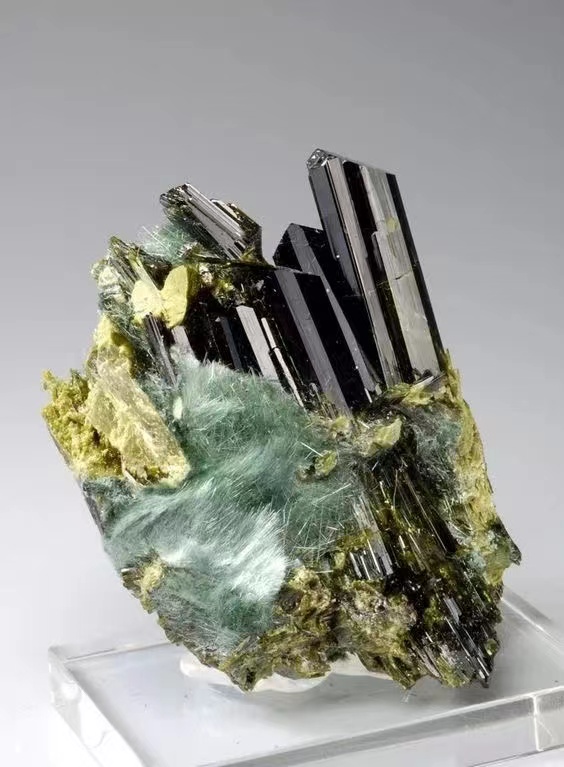Epidote
2023-05-18
As a silicate mineral, epidote is green in different shades, colorless or yellowish green. The epidote containing high manganese is called piedmontite. The different shades of green are due to the iron content. The more iron there is, the darker it looks. Epidote crystals are columnar, and the aggregation of crystals is generally granular. It’s the primary ore of precious jewelry.

The name epidote can be derived from the Greek “epidosis”, which means growth, showing the one side of the crystal is longer than the other.
Epidote crystals are columnar with stripes on the cylindrical surface, and the aggregation is often granular. The color is grass green in various hues. With the increase of iron content, it becomes darker. It has glass luster and perfect bottom cleavage.
Epidote can be converted through metamorphism, which is mostly seen in greenschist. During the metamorphism period of skarn, epidote is often transformed from early skarn minerals such as idocrase and pyrope. Epidote can also be the product of wall rock through alteration.
The formation of epidote is related to hydrothermal action. It’s widely distributed in metamorphic rocks, skarns and various igneous rocks through hydrothermal action. It can also crystallize directly from hydrothermal solution. Large crystalline epidote can be found in Handan, North China’s Hebei Province.




